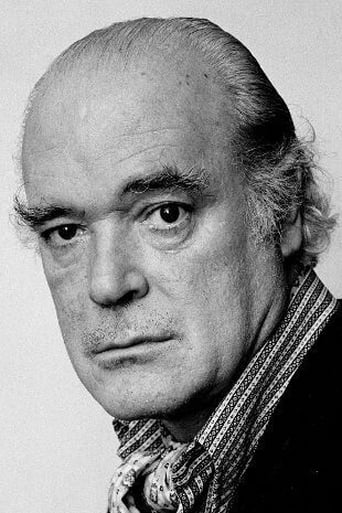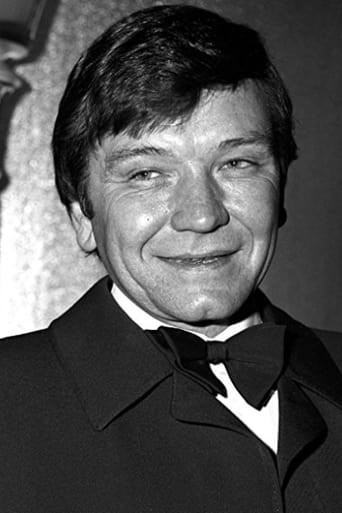Linbeymusol
Wonderful character development!
Stevecorp
Don't listen to the negative reviews
Zlatica
One of the worst ways to make a cult movie is to set out to make a cult movie.
Philippa
All of these films share one commonality, that being a kind of emotional center that humanizes a cast of monsters.
jawi-916-6704
Read the Peter Weiss play, and you'll find it to be a brilliant, multilayered, and meaningful work of art. The Peter Brook movie of it is anything but, and it helps to explain the downturn in highbrow British film c. 1967-1974. Peter Brook's baleful influence had to have encouraged the nihilistic pretentiousness of "A Clockwork Orange," "The Ruling Class," and all of Ken Russell.1. Grotesque ugliness for its own sake. Brook and his makeup artists have a field day with drooling "crazies" and perfectly elocuting clown-face choruses. If you've ever wanted to see Brad Pitt's performance in "Twelve Monkeys" multiplied by 20, by all means watch this movie.2. Allegedly good actors horrendously overacting: Glenda Jackson, Patrick Magee, Freddie Jones, and Ian Richardson (he of the unblinking stare) are all terrible.3. Maddening, gimmicky cinematography: fish-eye lens, blaring overexposed white light, blurriness.4. The worst nightmare sequence ever, added by Brook.5. A stupidly violent conclusion that also departs from Weiss.Basically the movie is for pseudo-intellectuals who are looking for a way to slum it whilst still claiming highbrow credentials. Read the play instead.
preppy-3
This takes place in 1808 in an insane asylum. The Marquis de Sade (Patrick Magee) puts on a play of an assassination for an audience. He uses the other inmates as actors. Things slowly get out of hand leading to a truly horrifying ending.I first caught this way back in 1980 at a center for adult education. It was a video of the movie shown for free. The picture was murky and the sound was terrible. Still I sat through it. I just caught it again (over 20 years later) on cable. This time I could see and hear it clearly. I'm not going to pretend that I understand what this is about, aside from the basic premise about a bunch of inmates putting on a play, and I do know it was based on a stage play. Still, I watched all 2 hours. The acting is great across the board but Magee, Ian Richardson and Glenda Jackson (in her major film debut) are exceptional. The movie is disturbing--I realize these are all actors playing roles but they're so good that you believe everything you're seeing. The direction also is masterful--it opens up the play cinematically. It has an R rating but that's mostly for subject matter and a brief nude scene with Richardson. This isn't for everybody--some people will be bored silly by it--but for those who like challenging movies this fits the bill. The ending is very disturbing. I give it a 7.
T Y
I'm surprised that this rated so high and receive such universal praise. It's virtually unwatchable in terms of mainstream entertainment and shouldn't have found any audience to appreciate it. It's shrill, endless and stagey.But it's conceits (The context and meaning of the murder of French Revolutionary figure Marat by Charlotte Corday, enacted as a play by post-revolutionary mental patients & penned by the similarly imprisoned Marquis de Sade) are unique and provocative. The play within the play has musical numbers; a trifle given to Corday (Glenda Jackson) as de Sade supplies her with the murder weapon is really nice; "...but love meant something... to you, ...I see, and something much different to me..." The bench duet between Charlotte and her sex-crazed nemesis is memorable.You will need a working understanding of the major players of the French Revolution and a willingness to listen to Marat expound on political theory at length. I own the DVD and even I can't sit through the damned thing. I also really hate some of the typical thespian casting (the all-clown Greek chorus giving it their all is excruciating) but I pop it in now and again to watch it in twenty-minute bursts. There's plenty to think about and though the Bourgeoisie are clearly portrayed as villainous swine, it still doesn't offer any easy answers to the long, painful aftermath of the French Revolution.Sadly, Patrick McGhee (A Clockwork Orange) is the type of leading man who would never again be seen after the advent of focus-groups and the blockbuster. What teen wants to look at anyone over thirty on screen?Les Miz is shallow cream pie compared to this.
moutona
One must read the play and see the background of Peter Weiss in order to get the full feel of this movie. It is absolutely the best presentation of the politics of man and our inability to ever resolve the major issues of our existence. Peter Weiss has fully captured the unending struggle between the politics necessary to obtain freedom versus that which enslaves. The best parts are the discussions between Sade and Marat as to the results of freedom versus dictatorship and capitalism versus socialism. The entire story provides a voyage through the human comedy and shows the inability of humanity to ever figure out the real truth of our existence and relationship to each other and our socitey. The result is a better understanding of the sinusoidal flow of the give an take of our history.





